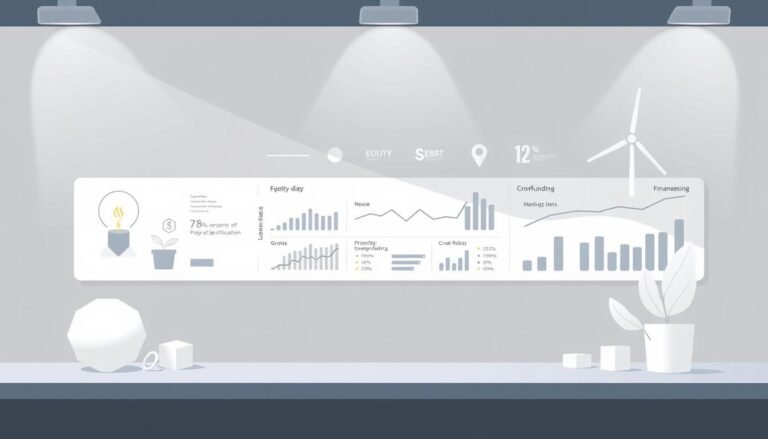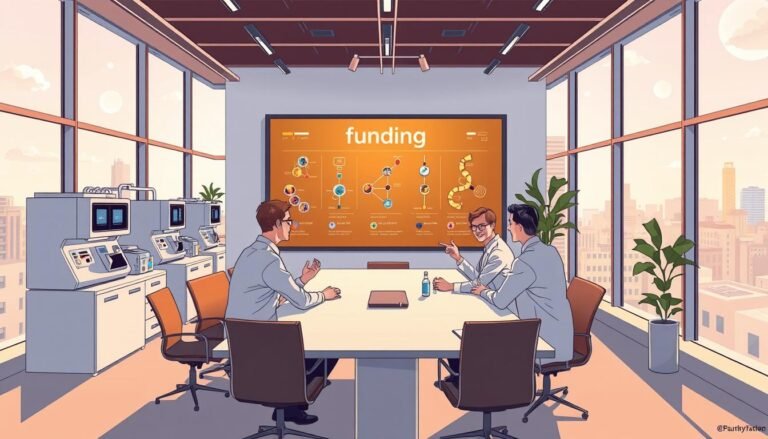Public-private partnerships (PPPs)
Can public-private partnerships really cut costs while improving vital infrastructure? With 14% of the world’s airports operating under private partnerships, these collaborations now handle over 40% of global passenger traffic. Public-private partnerships (PPPs) are reshaping how governments and companies tackle projects like airports, hospitals, and transportation systems. But how do these deals balance public needs with private profit motives?
From Europe’s 266 privatized airports to the UK’s 1992 Private Finance Initiative, PPPs have become a global trend. While they promise faster project delivery, critics point to hidden costs and delays—like Ireland’s National Children’s Hospital, which overshot its budget by billions. This guide breaks down how PPPs work, their risks, and why they matter for American infrastructure.
Key Takeaways
- PPPs involve governments and private firms sharing risks and rewards in projects like airports and hospitals.
- Private airports, though only 14% of total, process 40% of global passengers.
- PPPs often use Special Purpose Vehicles (SPVs) to manage construction and operations.
- Risks include higher borrowing costs and complex contracts that delay projects.
- Successful PPPs require clear oversight to ensure public benefits outweigh financial risks.
Understanding Public-private partnerships (PPPs)
Public-private partnerships (PPPs) help governments and businesses work together to build important infrastructure. These public sector partnerships involve contracts where private companies handle design, financing, or operations. This is different from traditional government projects because it requires both sides to make decisions together and commit for the long term.
Definition and Core Concepts
The U.S. Government Accountability Office says PPPs are partnerships where private companies and the public sector work together. The main points are:
- Both sides share risks and profits
- They have long-term agreements for ongoing oversight
- They use performance metrics to measure public benefits
| Type | Description |
|---|---|
| Build-Operate-Transfer (BOT) | Private firms build and operate infrastructure before transferring it to the public sector. |
| Build-Own-Operate (BOO) | Private ownership continues indefinitely, common in utilities and airports. |
| Design-Build (DB) | Private teams handle construction phases while governments manage operations. |
| Buy-Build-Operate (BBO) | Private investors purchase and modernize existing assets, seen in projects like toll roads. |
Canada’s 407 ETR highway is a great example. A private group manages this 67-mile toll road for 99 years. This shows how government collaboration can update infrastructure without the public having to pay upfront. These projects mix private know-how with public oversight.
Historical Development of PPPs
Public-private partnerships (PPPs) have a long history, shaping today’s infrastructure projects. The Charles River Bridge in 1786 is an early example. It shows how private money built key infrastructure through agreements.
These agreements let companies finance projects like bridges and railroads. After a certain time, the public took over ownership.
- 18th–19th Century: Concessions and joint ventures funded early U.S. transportation networks, including canals and railroads.
- Early 1900s: Federal policies shifted focus to public-led projects, reducing private involvement in highways and infrastructure.
- Modern Era: California passed the first state PPP law in 1989, sparking a national trend. By 2013, 33 states adopted similar frameworks.
In the late 20th century, PPPs saw a comeback. This was due to the need for new funding methods. Joint ventures became key for big projects like toll roads and public transit.
The World Bank’s efforts, like the “People-first PPPs for the SDGs,” set global standards. But, issues like cost overruns in UK and French projects led to changes. These changes focused on sharing risks better.
Now, PPPs blend old wisdom with new needs. From early agreements to state laws, their journey shows how they meet infrastructure needs while controlling costs and risks.
The Strategic Importance of PPPs in Modern Infrastructure
The United States has big infrastructure development challenges. It has a “D+” grade from the American Society of Civil Engineers. With 42,000 bridges needing repairs, PPPs are a big help.
PPPs bring in private sector involvement. This helps fix funding gaps and speed up projects. For example, the Port of Miami Tunnel cut downtown traffic by 80%.
- Leverages private capital to avoid overburdening public budgets
- Encourages innovation in construction tech and project management
- Enables risk-sharing to mitigate delays and cost overruns
| PPP Model | Description | Example |
|---|---|---|
| BOT (Build-Operate-Transfer) | Private entities finance, build, and operate assets for a set term | Channel Tunnel (Eurotunnel) |
| DB (Design-Build) | Accelerates project timelines by integrating phases | Denver Eagle P3 transit system |
| BOO (Build-Own-Operate) | Private ownership for long-term infrastructure | Australian healthcare facilities |
PPPs are great for complex projects like transit systems and water treatment plants. But, there are still challenges. High interest rates make borrowing harder.
Yet, models like BBO (Buy-Build-Operate) help upgrade existing assets without breaking the bank. It’s important to be clear about who’s responsible for projects. This is a big issue in the EU.
By finding the right balance, PPPs can keep improving our infrastructure. They help make it better for our communities.
Key Benefits of Public-Private Collaboration
Public-private partnerships help governments update infrastructure without breaking the bank. They use project financing to start projects like bridges and transit systems without needing a lot of money upfront. This way, costs are spread out over the life of the project, allowing for quicker upgrades.
This method keeps public funds for important services while speeding up needed improvements. It’s a win-win for everyone involved.
Financial Advantages for Government Entities
- Cost Efficiency: Private money covers the initial costs, with payments based on how well the project does. This method lowers immediate spending while aligning costs with long-term gains like less traffic or energy savings.
- Risk Mitigation: Deals shift risks like delays or changes in demand to private partners. For example, Portugal’s 1995 PPP program used private funds to build 2,000 km of roads. It shows how shared agreements can achieve big goals.
- Budget Predictability: Fixed-price contracts in partnership agreements offer clear spending plans. This helps governments budget without surprises.
- Innovation Incentives: Private companies bring new ideas, like smart traffic systems or green energy grids. These improve service quality and make assets last longer.
These benefits show how smart PPPs can change how we develop infrastructure. When done right, these partnerships help update public assets while keeping finances healthy.
Innovation and Efficiency Improvements
Public-private partnerships (PPPs) bring together private sector know-how and public goals. They introduce new technologies and ways of working that public projects often miss. For instance, the Dubai Metro and Zayed University in the UAE used smart systems and green designs. This shows how private partners can make projects better.
Risk sharing is key to PPPs. Contracts split risks between who can handle them best. Private companies deal with delays or cost increases, while governments handle policy changes. This setup makes sure everyone is responsible and helps projects succeed.
Performance-based contracts also push for better work. Private companies get bonuses for meeting efficiency goals. This motivates them to innovate and do their best.
Risk Sharing Between Sectors
- Private companies take on technical risks, like delays or cost increases, and are judged on their performance.
- Public agencies handle policy changes, making sure projects meet social needs. Private partners focus on getting the job done.
- Contracts include terms for updating technology and adjusting costs to keep projects flexible over time.
Studies show PPPs have big benefits. In Australia, PPPs had only 0.7% cost overruns, compared to 10.1% for traditional projects. They also had 5.6% time overruns, less than the 10.9% for usual projects. These results come from private sector’s drive to use resources wisely and find new solutions.
Good PPPs focus on long-term success. The G20 Principles stress the importance of resilience and technology in projects. By aligning goals and working together, PPPs pave the way for lasting growth and improvements that benefit users.
Accelerated Project Delivery
Public-private partnerships (PPPs) make infrastructure projects faster than usual ways. They mix private speed with government collaboration. This combo cuts down time with design-build methods and shared risks.
The Federal Highway Administration’s P3-VALUE tool helps figure out benefits. It shows how projects can be quicker and cheaper, keeping them on schedule.
Common Challenges and How to Overcome Them
Despite their benefits, PPPs face hurdles. Here are main problems and how to solve them:
- Complex Procurement Rules: Make processes simpler with standard agreements. Texas and California have sped up by pre-qualifying bidders and using digital tools.
- Stakeholder Resistance: Engage communities early to build trust. Talk openly about how projects will help, like less traffic or better utilities.
- Regulatory Hurdles: Make approvals smoother with joint teams. Ohio’s I-77 project, for example, cut 18 months off its timeline with state-federal teams.
| Project Type | Location | Outcome |
|---|---|---|
| Transportation | Virginia | Virginia’s I-95 widening finished 14 months early using design-build PPPs. |
| Utilities | Arizona | Arizona’s wastewater project saved $20M through private-sector innovation. |
| Public Facilities | Florida | Florida’s Miami garage project cut delivery time by 30% via performance-based contracts. |
Good government collaboration helps PPPs meet deadlines. Tools like BCA analysis and early risk assessments help partners work together. This shows that speed and quality can go hand in hand.
Identifying Suitable Projects for PPP Implementation
Choosing the right projects for public-private partnerships is key. Governments and private companies need to look at where they can work together best. They should find areas where private innovation can meet public needs.
Transportation, healthcare, and utilities are often good for PPPs. For example, highways with steady tolls or hospitals needing updates are great for private money. Here’s how to pick the right projects:
- Look at the money side: Projects with steady income, like toll roads or energy plants, draw in private cash.
- Consider risk levels: Big projects like airports might need shared risk models, like Build-Operate-Transfer (BOT).
- Check if it fits policy goals: Projects like green water systems or fast internet fit with green goals.
| Tool | Purpose | Example |
|---|---|---|
| Infrastructure Prioritization Framework (IPF) | Rank projects by social, environmental, and financial impact | Used in Colombia’s airport upgrades |
| PPP Project Screening and Analytics Tool (PSAT 2.0) | Screen climate-resilient projects | Applied in India’s renewable energy programs |
| Country PPP-Readiness Diagnostic | Evaluate institutional capacity for PPPs | Guides South Africa’s healthcare partnerships |
Tools like the World Bank’s PPP Fiscal Risk Assessment Model help predict financial risks. Public sectors should focus on projects where private help speeds things up without breaking the bank. Starting with the right project is key to sustainable infrastructure development.
Evaluating Project Scale and Complexity
Effective PPPs need a close look at project size and technical needs. A good framework makes sure goals match resources. Important things include money, technical skills, and how much risk you can take.
Feasibility Assessment Framework
- Cost-benefit analysis: Compare upfront costs with long-term savings.
- Risk assessment: Look at possible delays, cost overruns, or legal issues.
- Market testing: Check if the private sector is interested and ready to invest.
- Environmental impact reviews: Deal with sustainability and community worries.
| Sector | Avg. CAPEX (USD) | No. of Projects |
|---|---|---|
| Transportation | $1.41B | 23 |
| Energy & Natural Resources | $7.04B | 12 |
| Power & Utilities | $881M | 15 |
| Buildings | $448M | 23 |
Risks like unfinished designs (39.2% of disputes) or changes in scope (33.8%) show the importance of solid project financing plans. A strong framework helps match project size with the right PPP model, preventing costly mistakes.
Building Effective Partnership Agreements
Creating successful partnership agreements needs careful planning. They must balance public and private interests. Contracts should last 15–25 years, adapting to changes like new technology or policy updates.
Important parts include clear goals, risk sharing, and payment plans based on project success.
Good joint ventures start with open talks. Agreements should list penalties for not meeting goals and bonuses for going beyond. It’s also crucial to have political support to overcome bureaucratic challenges.
Contracts should consider environmental and social impacts, like how projects affect communities.
- Incorporate risk-sharing clauses to protect both parties from unforeseen costs
- Define dispute resolution processes to avoid delays
- Include public engagement clauses to maintain community trust
Research shows 12 key principles for lasting partnerships. These include:
- Aligning objectives between stakeholders
- Establishing clear accountability measures
- Designing conflict resolution pathways
For example, Liberia’s work on electricity shows how flexible agreements can succeed. Legal teams must make sure contracts can change with policy updates while keeping costs in check. When done right, these agreements help guide partnerships for many years.
Financing Structures for Successful PPPs
Traditional funding is key for project financing in infrastructure projects. In the U.S., private money usually leads, mixing debt and equity. This balance manages risk and reward. Banks provide senior debt, investors offer subordinated debt, and pension funds take equity stakes.

- Senior debt: Long-term loans secured against project cash flows
- Equity investments: Private capital absorbing first-loss exposure
- Reserve funds: Mitigating operational and construction risks
Special purpose vehicles (SPVs) protect projects from parent company debts. Lenders control governance with performance-based conditions. Governments help with grants, revenue guarantees, or credit enhancements to reduce risks.
For project financing success, it’s important to balance debt and equity. Coverage ratios are also crucial. Lenders can step in during defaults, and assets are secured. Land value capture, like toll roads funding nearby projects, adds revenue. The World Bank and domestic agencies offer blended finance, mixing grants and loans.
In the U.S., these structures are in action. A Texas highway project used tax increment financing. This method repays bonds with future property tax increases. It aligns private returns with public goals, ensuring funding for the project’s life.
Innovative Financing Solutions
Blended finance is changing how public-private partnerships get funding. It mixes public, private, and philanthropic money. This way, it finds funds for projects that others might miss. For example, green bonds and social impact bonds draw in investors who care about the planet and people.
- Tax Increment Financing (TIF): Uses increased property values to pay off costs.
- Subordinated loans: Have flexible repayment plans to lower upfront costs.
- Infrastructure banks: Pool funds for big projects like renewable energy grids.
U.S. programs like project financing tools—TIFIA and WIFIA—offer low-interest loans. Partnerships, like California’s High Road Training Fund, show success. It trains workers for green jobs with a mix of state grants and private money. These partnerships also share risks through equity or revenue-sharing.
Blended finance is real. Cities like Chicago and Denver use it for mixed-use projects. They balance affordable housing with commercial spaces, ensuring financial health. This approach attracts different investors, making big projects possible.
Regulatory Frameworks and Governance Considerations
Public-private partnerships need strong rules to work well. In the U.S., laws at all levels guide government collaboration. These laws make sure projects are innovative yet fiscally sound, matching public needs.
- Procurement laws to ensure fair competition
- Contracting authorities with clear decision-making powers
- Unsolicited proposal processes for private sector innovation
- Dispute resolution mechanisms to avoid delays
Good public sector partnerships need solid governance. Key practices include:
- Creating special PPP units to manage projects
- Keeping things transparent with public reports and audits
- Having oversight committees to check on compliance
The OECD says good institutions and clear finances are key. Chile and South Africa show how to manage projects well. They use laws like Chile’s Concessions Law and South Africa’s Treasury Regulation 16.
These laws help with planning and managing projects. They focus on getting the best value and managing risks. This way, projects can last a long time and be worth it.
U.S. areas can learn from these examples. They help meet national infrastructure goals. Clear laws and open governance build trust and make public investments pay off.
Oversight and Accountability Mechanisms
Effective oversight is key to using public funds wisely inpublic sector partnerships. Forprivate sector involvementto work, clear rules must guide each step. Important practices include regular checks using tools like automated data tracking in transportation.
Five best practices to maintain accountability:
- Implement continuous monitoring through audits, reports, and face-to-face meetings
- Enforce penalties like payment reductions or contract reviews for non-compliance
- Use tiered dispute resolution starting with mediation before arbitration
- Maintain handback reserve funds for facility repairs before transfer
- Require knowledge-sharing between government teams and contractors
Accountability frameworks need transparency, like the UK’s National Audit Office does. The World Bank and South Africa’s PPP Manual offer useful guides. Laws help by approving projects and reviewing audits. Independent regulators ensure fair oversight.
Public input is vital—citizens help by sharing their views and reporting issues. When rules are clear but flexible, partnerships can innovate and succeed. This builds trust for lasting collaborations between sectors.
Stakeholder Engagement Strategies
Effective public-private partnerships need strong government collaboration with all stakeholders. Talking to communities early helps avoid conflicts and makes sure projects meet public needs. For example, the Delhi Water Project faced delays because of stakeholder opposition, showing how bad communication can stop progress.
A good strategy starts with mapping stakeholders using tools from the IFC handbook. This helps find groups like local residents, businesses, and environmental advocates. The European Commission’s five standards—clarity, targeting, transparency, timelines, and feedback—guide every step.
- Identify key players using geospatial and interest-based criteria.
- Create a communication plan with regular updates via surveys and grievance systems.
- Assign a project spokesperson to address concerns promptly.
Phased engagement is key. The GCA handbook shows that climate-resilient PPPs using People-First approaches have higher success rates. This method focuses on “Value for People” and “Value for the Future,” matching UN Sustainable Development Goals.
Data from 9 PPP projects shows that tailored engagement reduces risks. Network analysis tools like degree centrality measure stakeholder influence. Exponential random graph models help spot patterns in communication gaps. Regular feedback loops, like user surveys, ensure alignment with community priorities.
Risk Management in PPP Projects
Risk management is crucial for public-private partnerships to succeed. Infrastructure projects face many unknowns, like budget issues and regulatory changes. Good risk assessment helps tackle these problems early on.
PPP projects have several main risk types:
- Design/Construction: Delays, cost overruns, material shortages
- Operational: Equipment failure, maintenance issues
- Financial: Revenue shortfalls, interest rate changes
- Political/Regulatory: Policy changes, permit delays
| Risk Type | Example | Mitigation Strategy |
|---|---|---|
| Market Risk | Declining user demand | Revenue guarantees in contracts |
| Environmental Risk | Permit delays | Pre-construction environmental assessments |
| Force Majeure | Natural disasters | Insurance clauses and emergency funds |
Risk assessment uses tools like risk heat maps to sort risks by likelihood and impact. Governments use the PFRAM model for systematic risk evaluation. Contracts often include performance bonds and traffic minimum guarantees to protect both sides.
Being open in partnership agreements helps assign risks to the right party. For example, inflation risks might go to the private partner through adjustable pricing. Clear risk lists and backup funds keep projects stable during development.
Risk Allocation Principles
Risk allocation in PPPs is key to project success. It assigns tasks to the right partner. This can save up to 60% in costs, like in building highways or airports.
It’s about matching risks with the partner who can handle them best. It’s also about balancing costs and being flexible as projects change.
- Assign risks to the party with greatest control or expertise
- Balance cost of transferring risks against potential savings
- Build flexibility for adjustments during project execution
For instance, private partners manage construction delays because they’re experts in project management. Public sectors handle demand risks if they know the market well. Contracts need clear plans for dealing with risks, like insurance or emergency funds.
| Risk Type | Allocation | Rationale |
|---|---|---|
| Construction delays | Private sector | Control over timelines |
| Market demand | Public sector | Policy influence on demand |
| Environmental hazards | Shared | Both parties have mitigation roles |
Using tools like damage caps and feasibility studies can lower costs. The GI Hub and World Bank suggest aligning risk allocation with joint ventures’ abilities. Regular checks and flexible plans help manage risks throughout a project.
Performance Measurement and Success Metrics
Success in public sector partnerships needs clear goals and measurable results. Key performance indicators (KPIs) help check if infrastructure projects meet their promises. For instance, the I-595 Corridor Improvement project in Florida used KPIs to cut construction delays by 30%.
Good metrics should match both short-term goals and long-term societal benefits.
- Construction performance: Time and budget adherence ensure projects stay on track.
- Operational metrics: User satisfaction and service reliability reflect real-world impact.
- Financial benchmarks: Cost savings and ROI demonstrate value for public funds.
- Social/environmental gains: Improved access to services or reduced emissions show broader benefits.
Comparing project results to hypothetical scenarios can be tough. Qualitative data, like community feedback, adds depth but needs careful analysis. A healthcare PPP in the Netherlands cut diagnostic wait times from 14 days to 48 hours, proving KPIs can drive tangible change. Malawi’s health data systems boosted service use by 50% through user-centered metrics.
Transparency is key. Independent audits and open-source tools like DHIS 2 ensure accountability. The U.S. Department of Transportation’s 2011 report shows how KPIs in projects like the Capital Beltway tied agency goals to measurable outcomes. By focusing on data that matters most to citizens, public sector partnerships can prove their role in building resilient infrastructure projects that meet modern needs.
Case Studies: Successful PPP Projects in the United States
Across the U.S., transportation projects show how PPPs fill funding gaps and get complex jobs done. These partnerships mix public goals with private skills to build roads, transit, and bridges. Here are some big examples pushing progress in key areas:
Transportation Infrastructure Examples
- Port of Miami Tunnel: A $412 million deal between Miami-Dade County and a private group. The private side handled design, build, and finance. Tolls and grants from the feds paid for it, making traffic better at Florida’s busiest port.
- I-495 Capital Beltway HOT Lanes: A 80-year deal in Virginia with Fluor-Transurban, Inc. made 14 miles of express lanes. Tolls and public money paid for it, cutting down on I-66 traffic. The private side ran it, showing PPPs can last long.
- Dulles Greenway: Virginia’s first toll-road PPP since the 1990s. Public groups set safety rules, while the private side managed prices and upkeep. Its success led to easier PPP approvals in Virginia, thanks to the 1995 Virginia Public Private Transportation Act.
These examples show PPPs’ big role in building modern infrastructure. By 2006, over 70 highway PPPs were done, showing a big shift to working with the private sector. These projects teach us about sharing risks and finding new ways to finance.
Healthcare Facility Partnerships
Public-private partnerships (PPPs) are changing healthcare and municipal services in the U.S. They combine private skills and public funds to update infrastructure and keep services high quality. For example, the University Medical Center in New Orleans and UC San Diego’s Jacobs Medical Center show how PPPs boost healthcare. They do this through partnership agreements that clearly define roles and goals.
Municipal Service Delivery Models
PPPs like the Rialto Water Services and Long Beach Civic Center show their value. They improve infrastructure without straining public budgets. These partnerships use long-term partnership agreements to mix private creativity with public responsibility. This ensures services like water systems and facilities management are efficient and meet community needs.
| Metric | Before PPP | After PPP |
|---|---|---|
| Patient Volume Increase | Baseline | 36.8% rise over 3 years |
| Surgical Wait Time | 30 days | 15-day reduction |
| Hospital Stay | 5.10 days | 4.46 days |
| Tuberculosis Mortality Rate | Original Rate | 15% decrease |
| Patient Satisfaction | Traditional hospital averages | Higher satisfaction rates |
Success comes from clear communication, risk sharing, and building trust. But, there are hurdles like governance issues and funding delays. These need to be tackled with proactive management and clear agreements. By doing so, PPPs can make lasting changes in healthcare and public services across the country.
Technological Innovations Reshaping Public-Private Collaboration
New technologies are changing how private sector involvement helps with infrastructure development. Smart systems like IoT sensors and AI are making projects better. They allow for quick data analysis and predict when things might go wrong.
These tools help governments and businesses work together better. This ensures projects are completed on time and within budget.
- IoT devices monitor bridges and roads, reducing repair delays.
- AI algorithms optimize public transit routes, cutting costs.
- Blockchain secures data sharing between partners, building trust.
- Digital twins simulate project outcomes before construction begins.
Recent projects show this change. Google’s undersea cable in Africa has improved digital connectivity. USAID’s work with Ukraine’s Diia app has made government services smoother.
The Bill & Melinda Gates Foundation’s Mojaloop platform has helped with financial inclusion. The High Impact Initiative’s $400M pledge, backed by Estonia and Spain, aims to tackle climate and digital divides with tech.
But there are risks too. Data privacy laws and IP disputes need clear agreements. Yet, studies show tech-driven partnerships can boost the economy. Microsoft, Amazon, and others are now working on public projects, blending innovation with public goals.
The future of infrastructure development will depend on policies that support tech use and accountability. This will help both sectors grow in this changing world.
Future Trends in Infrastructure Development Through Partnerships
As infrastructure needs grow, infrastructure projects are moving into new areas. Government collaboration is key to making progress. Fields like renewable energy and smart cities are leading the way for partnerships.
Emerging Sectors for PPP Application
Some areas are really taking off:
- Renewable energy: Solar and wind projects share profits with public bodies.
- Climate-resilient systems: Flood defenses and green projects fight climate change.
- Broadband networks: Public and private funds boost rural internet.
- Affordable housing>
and education facilities: Meeting social needs through special agreements.
Technology like AI and IoT is changing project management. For example, smart sensors in bridges or energy grids make maintenance better. But, there are still hurdles.
Creating fair cost structures and avoiding monopolies is crucial. The U.S. is exploring blended finance models, mixing grants and loans. This could help fund projects.
Success hinges on clear contracts and stable policies. As cities focus on sustainability, partnerships must innovate responsibly. With good governance, PPPs can fill funding gaps and meet today’s needs for clean energy, connectivity, and strong communities.
Evolving Partnership Models
Public-private partnerships (PPPs) are changing due to global disruptions and new priorities. After the pandemic, governments and private companies focus on being flexible and resilient. They are moving towards new models like outcome-based contracts and integrated project delivery.
These new models aim to fix the old PPPs’ rigidities. They make partnerships more adaptable and effective.
- Risk-sharing frameworks now account for supply chain shocks and public health emergencies.
- Outcome-based agreements tie payments to measurable results, not just construction milestones.
- Collaborative governance structures ensure public accountability stays central.
The UK’s NHS PFI programs offer lessons. They show the need for PPPs to balance profit and public benefit. The Welsh Mutual Investment Model is a better example, focusing on risk-sharing and long-term benefits.
There’s still debate on PPPs and privatization. Critics say private firms control key services, even if governments own them. Supporters say new hybrid models can balance efficiency with public oversight.
Today, PPPs focus on climate and equity. Cities like Boston and Chicago include carbon reduction clauses in deals. Partnerships must now show they deliver value and uphold values.
Conclusion: Maximizing Value Through Strategic Public-Private Partnerships
Public-private partnerships (PPPs) are a way to update infrastructure and services. They allow governments to use private money for big projects like roads and hospitals. This mix of innovation and public goals is key.
Clear agreements are crucial. They make sure everyone knows their role and who bears the risks. This leads to better efficiency and accountability.
Even though there are debates, PPPs have a lot of potential. In the U.S. alone, over $16.2 billion has been invested since 2019. But success depends on aligning goals, being transparent, and learning from past mistakes.
PPPs are not for every situation but can be very useful in certain cases. They make up only 3% of global infrastructure spending. It’s important to have clear goals, strong oversight, and flexible plans to meet changing needs.
As infrastructure needs grow, PPPs can help fill the gap if done right. Governments and businesses need to work together. They should focus on being open and sharing goals to bring real value to communities.
Source Links
- Public-Private Partnership (PPP) – https://www.icao.int/sustainability/pages/im-ppp.aspx
- Public–private partnership – https://en.wikipedia.org/wiki/Public–private_partnership
- Public-Private Partnerships vs. Inspection & Oversight Sample – https://www.jjay.cuny.edu/public-private-partnerships-vs-inspection-oversight-sample
- Public-Private Partnerships (PPPs): Definition, How They Work, and Examples – https://www.investopedia.com/terms/p/public-private-partnerships.asp
- Public-Private Partnership (P3) Basics | Associated General Contractors of America – https://www.agc.org/public-private-partnership-p3-basics
- A smarter way to think about public–private partnerships – https://www.mckinsey.com/capabilities/risk-and-resilience/our-insights/a-smarter-way-to-think-about-public-private-partnerships
- How Can Public-Private Partnerships (PPPs) be Successful? – https://www.worldbank.org/en/region/mena/brief/how-can-public-private-partnerships-ppps-be-successful
- A short history of PPPs for development: the good, the bad, and the hopeful – https://blogs.worldbank.org/en/ppps/short-history-ppps-development-good-bad-and-hopeful
- A Brief History of Public Private Partnerships | Lorman Education Services – https://www.lorman.com/resources/a-brief-history-of-public-private-partnerships-16968?srsltid=AfmBOoriMUo1GM37eWj1fBNQoiMLrrqE5FNI0EyocJEdAf7cEfzOHJCS
- The Future Of Economic Development In Public-Private Partnerships – LSI – https://lsiwins.com/the-future-of-economic-development-in-public-private-partnerships/
- Public-private partnerships can revitalize US infrastructure – https://www.federaltimes.com/opinions/2024/06/11/public-private-partnerships-can-revitalize-us-infrastructure/
- PUBLIC-PRIVATE-PARTNERSHIP LEGAL RESOURCE CENTER – https://ppp.worldbank.org/public-private-partnership/overview/ppp-objectives
- PDF – https://www.ppiaf.org/sites/ppiaf.org/files/documents/toolkits/highwaystoolkit/6/pdf-version/1-14.pdf
- Benefits of Public-Private Partnership (PPP) Model for Expanding into New States – https://www.linkedin.com/pulse/benefits-public-private-partnership-ppp-model-expanding-mamta-pandhi
- Public-Private Partnerships for Innovation and Efficiency in Government Projects – https://www.linkedin.com/pulse/public-private-partnerships-innovation-efficiency-projects-elkady–xvdvf
- PUBLIC-PRIVATE-PARTNERSHIP LEGAL RESOURCE CENTER – https://ppp.worldbank.org/public-private-partnership/node/7596
- 5.2. Efficiency and Effectiveness: PPP as a Potential Source of Higher Efficiency for Infrastructure Projects – https://ppp-certification.com/ppp-certification-guide/52-efficiency-and-effectiveness-ppp-potential-source-higher-efficiency
- Evaluating Public-Private Partnership Project Delivery Fact Sheet – https://www.fhwa.dot.gov/ipd/pdfs/fact_sheets/fact_sheet_6_evaluating_project_delivery.pdf
- Accelerating Infrastructure Development: The Power of Public-Private Partnerships – https://gia.finance/news/accelerating-infrastructure-development-power-public-private-partnerships
- View PDF – https://ppp.worldbank.org/public-private-partnership/print/pdf/node/5536
- PUBLIC-PRIVATE-PARTNERSHIP LEGAL RESOURCE CENTER – https://ppp.worldbank.org/select-wbg-ppp-toolkits
- Comparing public-private partnerships in construction: A damages perspective – HKA – https://www.hka.com/article/comparing-public-private-partnerships-in-construction-a-damages-perspective/
- PDF – https://www.isec-society.org/ISEC_PRESS/EURO_MED_SEC_02/pdf/PRO-01.pdf
- How Do You Build Effective Public-Private Partnerships? – https://insights.som.yale.edu/insights/how-do-you-build-effective-public-private-partnerships
- Strategies to develop and promote public-private partnerships (PPPs) in the provision of hospital services in Iran: a qualitative study – https://pmc.ncbi.nlm.nih.gov/articles/PMC4886559/
- Principles for building public-private partnerships to benefit food safety, nutrition, and health research – https://pmc.ncbi.nlm.nih.gov/articles/PMC3886300/
- 7. How a Private Finance PPP Project is Financed: Where the Money to Pay Construction Costs Comes From – https://ppp-certification.com/ppp-certification-guide/7-how-private-finance-ppp-project-financed-where-money-pay-construction
- PUBLIC-PRIVATE-PARTNERSHIP LEGAL RESOURCE CENTER – https://ppp.worldbank.org/public-private-partnership/applicable-all-sectors/how-ppps-are-financed
- No title found – https://www.elibrary.imf.org/view/journals/087/2021/010/article-A001-en.xml
- PDF – https://www.un.org/sites/un2.un.org/files/innovative_fincancing_14_march.pdf
- Innovative Financing models for Public Private Partnerships (PPPs) in Real Estate Development – https://urbanmaestro.org/wp-content/uploads/2021/04/urban-maestro_transversal-analysis-on-ppps_g-squires.pdf
- Exploring Innovative Funding Models – Local Infrastructure Hub – https://localinfrastructure.org/resources/exploring-innovative-funding-models/
- PUBLIC-PRIVATE-PARTNERSHIP LEGAL RESOURCE CENTER – https://ppp.worldbank.org/PPP_Online_Reference_Guide/Establishing_PPP_Framework
- PDF – https://www.ppiaf.org/sites/default/files/documents/2019-01/The_Governance_of_Public-Private_Partnerships_A_Comparative_Analysis.pdf
- Monitoring and Oversight for Public-Private Partnerships (P3s) Fact Sheet – https://www.fhwa.dot.gov/ipd/pdfs/fact_sheets/fact_sheet_8_monitoring_and_oversight.pdf
- PUBLIC-PRIVATE-PARTNERSHIP LEGAL RESOURCE CENTER – https://ppp.worldbank.org/public-private-partnership/applicable-all-sectors/broader-ppp-program-governance
- PUBLIC-PRIVATE-PARTNERSHIP LEGAL RESOURCE CENTER – https://ppp.worldbank.org/public-private-partnership/applicable-all-sectors/stakeholder-communication-and-engagement
- Stakeholder engagement variability across public, private and public-private partnership projects: A data-driven network-based analysis – https://pmc.ncbi.nlm.nih.gov/articles/PMC9821786/
- Engaging Stakeholders for Successful PPPs – https://www.linkedin.com/pulse/engaging-stakeholders-successful-ppps-david-baxter
- PDF – https://www.ppiaf.org/sites/ppiaf.org/files/documents/toolkits/highwaystoolkit/6/pdf-version/5-37.pdf
- PUBLIC-PRIVATE-PARTNERSHIP LEGAL RESOURCE CENTER – https://ppp.worldbank.org/public-private-partnership/applicable-all-sectors/identifying-risks
- PUBLIC-PRIVATE-PARTNERSHIP LEGAL RESOURCE CENTER – https://ppp.worldbank.org/public-private-partnership/financing/government-risk-management
- Risk Allocation in Public-Private Partnerships: Maximizing value for money – https://www.iisd.org/system/files/publications/risk-allocation-ppp-maximizing-value-for-money-discussion-paper.pdf
- Introduction – https://ppp-risk.gihub.org/introduction/
- PDF – https://www.fhwa.dot.gov/ipd/pdfs/p3/p3_guidebook_risk_assessment_030314.pdf
- Measuring Performance and Progress in Public–Private Partnerships for Health Systems Strengthening – The Role of Public-Private Partnerships in Health Systems Strengthening – https://www.ncbi.nlm.nih.gov/books/NBK373276/
- Key Performance Indicators in Public-Private Partnerships – https://international.fhwa.dot.gov/pubs/pl10029/pl10029.pdf
- PUBLIC-PRIVATE-PARTNERSHIP LEGAL RESOURCE CENTER – https://ppp.worldbank.org/public-private-partnership/library/key-performance-indicators-public-private-partnerships
- PDF – https://www.ppiaf.org/sites/ppiaf.org/files/documents/toolkits/highwaystoolkit-russian/6/pdf-version/us.pdf
- Case Studies of Transportation Public-Private Partnerships in the United States – The Intersector Project – https://intersector.com/resource/case-studies-transportation-public-private-partnerships-united-states/
- Public–Private Partnerships Model Applied to Hospitals—A Critical Review – https://pmc.ncbi.nlm.nih.gov/articles/PMC10298377/
- PUBLIC-PRIVATE-PARTNERSHIP LEGAL RESOURCE CENTER – https://ppp.worldbank.org/public-private-partnership/ppp-health
- Hospital services under public-private partnerships, outcomes and, challenges: A literature review – https://pmc.ncbi.nlm.nih.gov/articles/PMC9424887/
- Advancing Digital Transformation and Digital Public Infrastructure: The Role of the Private Sector – https://www.csis.org/analysis/advancing-digital-transformation-and-digital-public-infrastructure-role-private-sector
- Public-Private Partnerships in Innovation: Benefits, and Challenges. – https://www.linkedin.com/pulse/public-private-partnerships-innovation-benefits-thamer-shaker-qsuuf?utm_source=rss&utm_campaign=articles_sitemaps
- PDF – https://sdgs.un.org/sites/default/files/2023-05/A21 – Wu – Innovative Digital Public-Private Partnership from Pandemic Response to Resilient Recovery.pdf
- PUBLIC-PRIVATE-PARTNERSHIP LEGAL RESOURCE CENTER – https://ppp.worldbank.org/public-private-partnership/applicable-all-sectors/infrastructure-challenges-and-how-ppps-can-help
- The future of Public-Private Partnerships (PPPs)? – https://www.linkedin.com/pulse/future-public-private-partnerships-ppps-moses-solemon
- The Future of Public-Private Partnership (PPP) Contracts in Infrastructure Projects: A Pathway to Sustainable Growth and Innovation – https://www.linkedin.com/pulse/future-public-private-partnership-ppp-contracts-projects-asghari-wylhf
- Eight Strategies For Successful Public-Private Partnerships | WRNS Studio – https://wrnsstudio.com/stories/eight-strategies-for-successful-public-private-partnerships/
- Better together? The evolution of public-private partnerships – Hospital Times – https://hospitaltimes.co.uk/better-together-the-evolution-of-public-private-partnerships/
- P:\Client Consulting\EDA Economic Development Admin\Literature Review\FINAL VERSION 09-06-02\Econsult_cover.wpd – https://cge.fresnostate.edu/oced/documents/Public-Private Partnerships.pdf
- PDF – https://www.tse-fr.eu/sites/default/files/TSE/documents/doc/wp/2019/wp_tse_986.pdf








